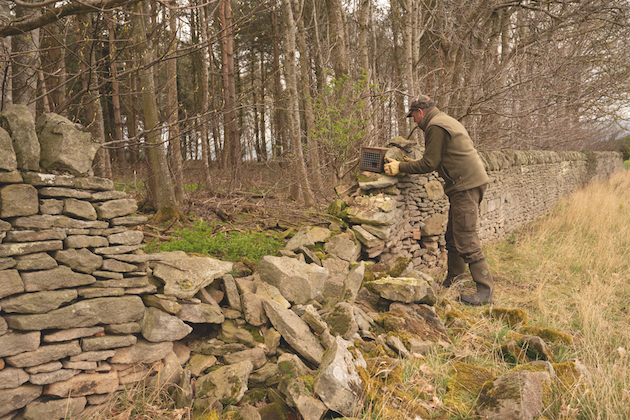Don’t fall foul of the new trapping laws
New legislation comes in on 1 April when the Fenn MK4 trap becomes illegal warns Alan Edwards

Make sure you are up to date on the laws concerning traps
Trapping laws and predator control
The first days of March have brought respite from the winter storms. Rain and wind seems to have lashed the estate for an eternity and the very thought of spring seems weeks away, but this can suddenly change. The days are stretching out and two sunny ones can alter the whole scenario.
Lapwings can now be heard in buoyant mood, performing aerobatics. You get the feeling that nest-building is hours away. But as the chill of the afternoon air descends, the dancing behaviour of the lapwings changes into a more sombre feeling when the birds sense the arrival of a squally wintry shower.
This brief spell of activity makes me anxious about my preparations in advance of the spring predator control campaign. Predator work is a continual duty on a wild bird shoot, though at times more pressing work — such as feeding, habitat management and shoot days — is required to maintain an organised regime.
Spring predator control
Opportunities are always sought to catch up with predators that pose a threat, no matter what time of the year. The fox is the classic example of this, but as spring announces its intentions a more thorough, far-reaching and thoughtful campaign needs to be waged.
The main problems I face can be difficult to quantify; it’s all too easy to describe predator numbers as “out of control”. I have settled on the word “relentless” as the perfect description of the weight of predators that continue to advance on the area managed for wild game and conservation. This relentless pressure needs careful management, as it’s all too easy to become bogged down or complacent. Missed opportunities can prove costly.
The first and most vital block in the wall of any spring predator control programme is the legal one. There was a time when keepers did not really contemplate the legality of the job. Thankfully we have moved on from that and, though it’s a burden, the time to check that your pest control plans for various species are fully compliant with the latest legislation is upon us. Traps, particularly, need to meet all the new rigours that the law places on them. The obvious one is the spring trap for stoats. There’s no excuse for not having new traps in place now in advance of 1 April. From this date, the Fenn MK4 trap becomes illegal.
Tully & DOC traps
At the moment, the Tully and DOC traps have been tested, verified and are legally approved to take up the challenge of stoat control.
Concerns over the adaptability of these traps to deliver effective stoat control have been expressed. It has been a fascinating process watching the differing variations being applied to trap deployment.
The keepers’ grapevine has been buzzing with images of attempts to vary, camouflage and adopt deployment of these new traps, while staying within the law, of course. Stone tunnels, earth tunnels, wooden tunnels and plastic tunnels have all been viewed, scrutinised and praised by an army of practitioners who are all seeking the perfect deployment method.
Some variations have not met the legal requirements placed upon them in the form of baffles to guide the target animal on to the killing area of the trap. The errors and imperfections in any trap displayed or discussed have been rectified and at times this has prevented an embarrassing moment or even legal action. Everyone has been forward-thinking, positive and extremely helpful. It’s a pleasure to see keepers, estates and the industry come together to solve a common problem.
Be prepared
Time spent checking over Larsen traps for faults or breakages is vital. This can be said of all trapping and predator control techniques: think forward and be prepared to protect the game birds, songbirds and wading birds that rely on this vital work.
On my rounds, the first signs of hen pheasants moving from the shelter of larger blocks of woodland is evident as they seek a cock pheasant with a territory to defend. Grey partridges are paired and readying themselves for the breeding cycle. Time now to increase our efforts.








